©2017-24 Shiny Dental Care
The best solution to missing teeth offered from modern dentistry. Everybody has a
unique smile, and having a full set of teeth can help you show off your smile. Not
only is it healthy to have a full set of teeth for eating, biting, and speaking properly,
it also could provide a huge boost of confidence and self-esteem. Dental implants
are surgically placed where the missing tooth once was, but the procedure is almost
completely painless.
An implant is just a small synthetic post used as a substitute for the root of the
missing tooth. It is made of metal, usually titanium, to ensure durability. The
implant is inserted into the bone and left to integrate. Next the abutment is
connected before placing the permanent crown. This allows for the implant to
integrate with the bone. Once that is done, the permanent crown is attached to the
implant and the procedure is complete. Local anesthetic ensures a painless operation, so there’s nothing to be afraid of.
Not getting an implant for a missing tooth can have its consequences. Your bite can be affected by improper lineup which
can cause bite problems. Missing teeth can also affect your diet as it can prevent you from eating certain foods.
Don’t let missing teeth bring your smile down, call 703-333-5105 if you have any questions or come by the office on 6377
Little River Trnpk. and Dr. Truong will see if you’re eligible for a dental implant.
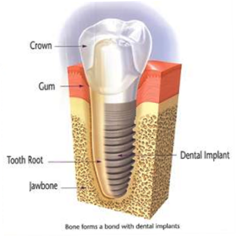



IMPLANT INSERTED
ABUTMENT
CROWN
Implant Surgery Guide
In order to ensure the correct placement of the implant fixture into the bone, it is recommended that the
patient undergoes a CBCT scan. This X-ray produces a 3D image of the entire mouth including nerves,
sinuses, tissues, blood vessels, and bones. The results of the scan will be sent to the lab where the doctor of
the lab will discuss with the treating dentist as to which size is best suitable for the available bone. This will
guide the drilling of the implant fixture and ensure correct placement into the remaining bone as well as
ensuring there is no accidental penetration of the nerve, bone, tissue or the sinus floor.

©2017-24 Shiny Dental Care

The best solution to missing teeth
offered from modern dentistry.
Everybody has a unique smile, and
having a full set of teeth can help you
show off your smile. Not only is it
healthy to have a full set of teeth for
eating, biting, and speaking properly, it
also could provide a huge boost of
confidence and self-esteem. Dental
implants are surgically placed where the
missing tooth once was, but the
procedure is almost completely painless.
An implant is just a small synthetic post
used as a substitute for the root of the
missing tooth. It is made of metal,
usually titanium, to ensure durability.
The implant is inserted into the bone
and left to integrate. Next the abutment
is connected before placing the
permanent crown. This allows for the
implant to integrate with the bone. Once
that is done, the permanent crown is
attached to the implant and the
procedure is complete. Local anesthetic
ensures a painless operation, so there’s
nothing to be afraid of.
Not getting an implant for a missing
tooth can have its consequences. Your
bite can be affected by improper lineup
which can cause bite problems. Missing
teeth can also affect your diet as it can
prevent you from eating certain foods.
Don’t let missing teeth bring your smile
down, call 703-333-5105 if you have
any questions or come by the office on
6377 Little River Trnpk. and Dr. Truong
will see if you’re eligible for a dental
implant.
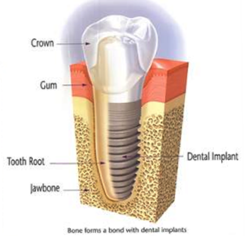
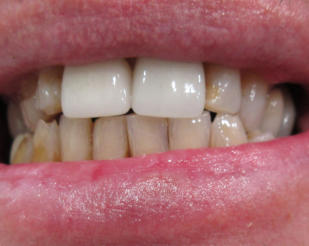
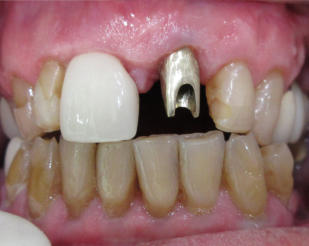
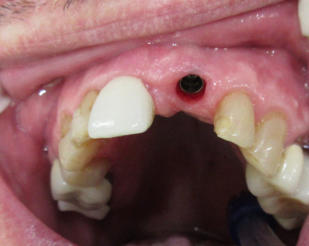
IMPLANT INSERTED
ABUTMENT
CROWN
Implant Surgery Guide
In order to ensure the correct placement
of the implant fixture into the bone, it is
recommended that the patient undergoes
a CBCT scan. This X-ray produces a 3D
image of the entire mouth including
nerves, sinuses, tissues, blood vessels,
and bones. The results of the scan will be
sent to the lab where the doctor of the lab
will discuss with the treating dentist as to
which size is best suitable for the available
bone. This will guide the drilling of the
implant fixture and ensure correct
placement into the remaining bone as well
as ensuring there is no accidental
penetration of the nerve, bone, tissue or
the sinus floor.
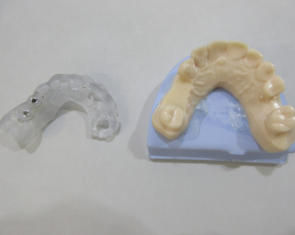
MyShinyDental.com
Dr. Tina N. Truong
(703) 333-5105
6377 Little River Turnpike, Alexandria, VA 22312

MyShinyDental.com
Dr. Tina Truong
6377 Little River Turnpike, Alexandria, VA 22312




























